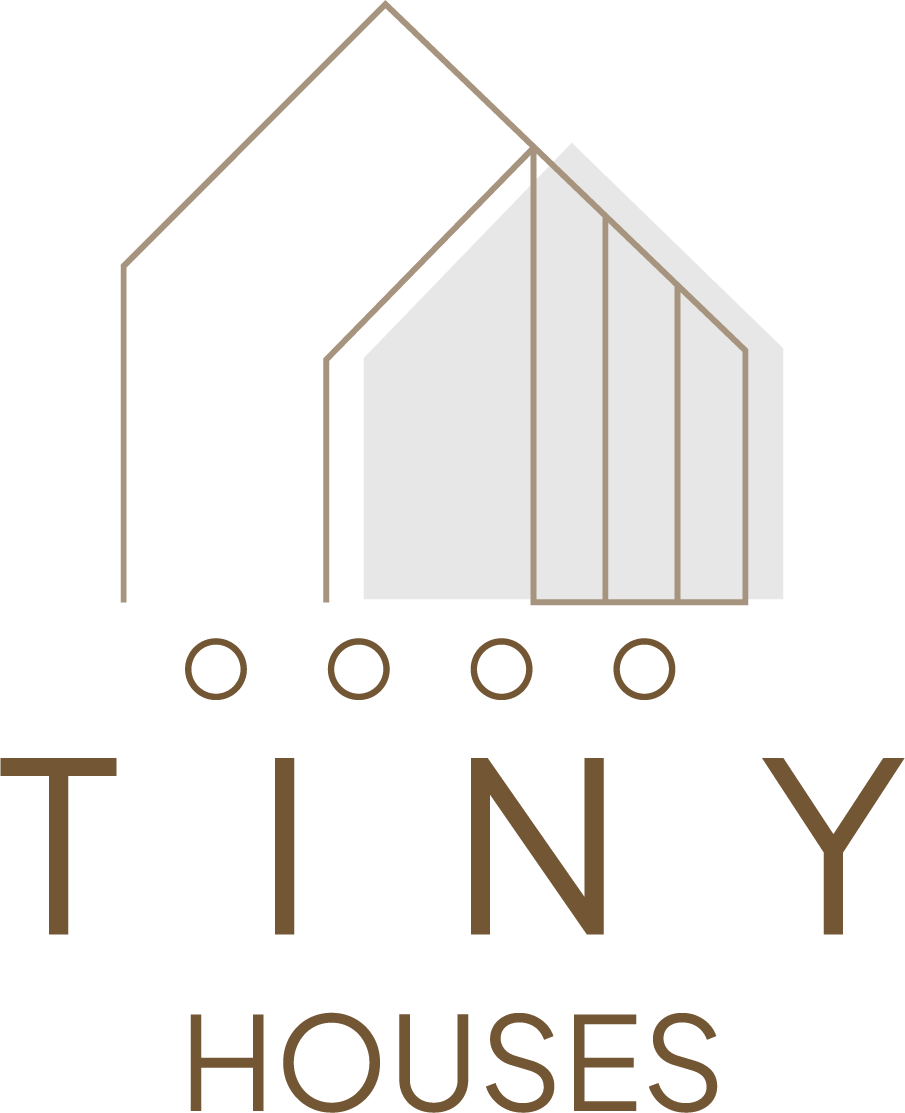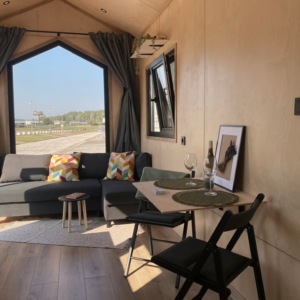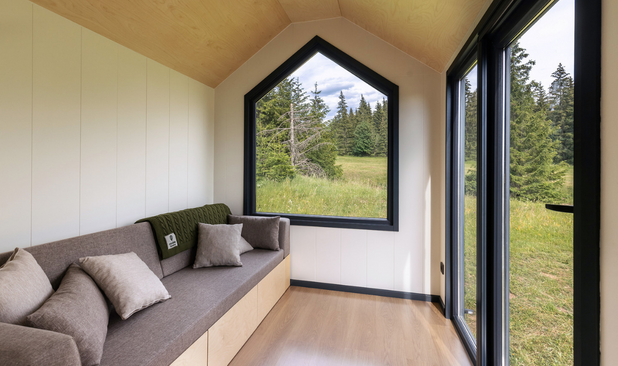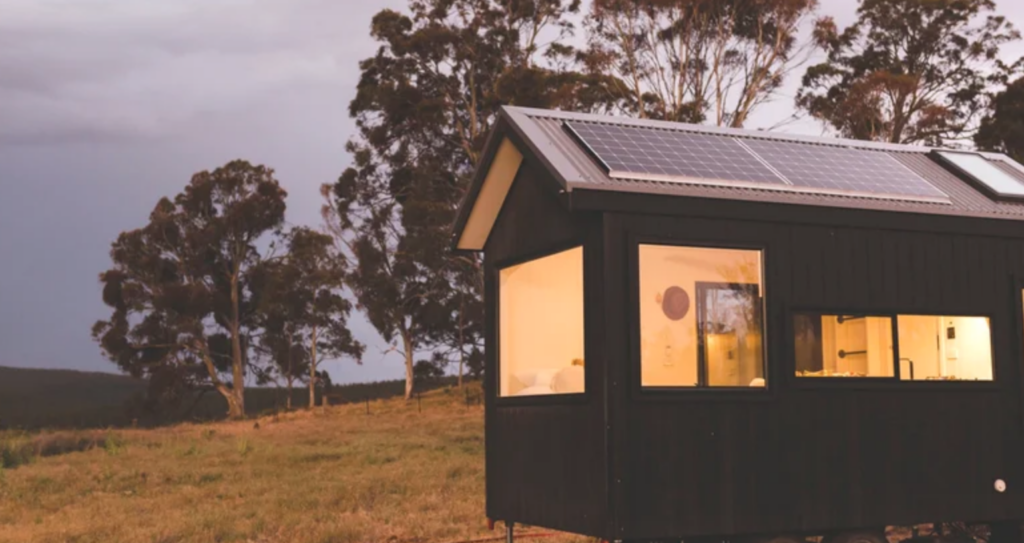We bring you the latest interview we conducted with the director of the Tiny Houses Travel project, Marián Gabriš. We talked about why tiny houses are not only a stylish form of accommodation, but also an interesting investment concept of the future. In the interview, you will learn more about their use in tourism, glamping, and the possibilities of their financing.
What is the concept of tiny houses and what benefits does it bring for travelers and investors?
It is a mobile home concept that is small, comfortable, luxurious and offers everything a standard home has to offer. It is a independent living, does not need foundations or utilities, offers privacy and the possibility of "parking" to another location, e.g. from the forest to the lake. From an investment perspective, it is interesting due to its low price compared to classic real estate, quick implementation, offers diversification of accommodation options, and fits into the glamping concept, which is experiencing a boom in the area of accommodation and services.
What is the difference between traditional hotels and tiny house accommodation?
The current trend of glamping - luxury camping - combines minimalism with luxury and ecology. Compared to a traditional hotel, the visitor also does not feel anonymous in a large resort, is not disturbed and does not disturb other neighbors. Of course, the associated experiences are incomparable to hotel services, imagine a private jacuzzi, a small sauna or just a hot tub by the forest. The house can be used all year round and can be heated with a stylish stove.
What is the potential return on investment in tiny houses compared to other forms of real estate investment?
Tiny houses have lower initial costs than traditional homes or apartments, while being more flexible and easily portable, which can reduce the risk associated with real estate. Tiny houses are part of a growing trend towards minimalism and sustainability, which may mean long-term growth in demand for these forms of housing, especially in areas with strong tourism. Tiny houses can have a high return on investment due to lower acquisition costs and higher short-term rental prices.
Why is this trend growing and what factors are influencing the demand for tiny houses on the go?
In recent years, more and more people have turned to minimalist living and sustainable travel. Tiny houses on wheels combine these two trends into one, offering freedom of movement without having to give up the comforts of home. Traveling in a tiny house combines the comforts of home with authentic experiences in nature.
Combined with the glamping (luxury camping) trend, these houses are attractive to those looking for an original form of travel and relaxation. Many choose them as affordable housing, while others use them for rental for tourists, thereby creating passive income.
How can a tiny house be adapted to different destinations and tourist needs?
The adaptability of the tiny house to different destinations and tourist needs is guaranteed thanks to its flexibility, environmental friendliness and ability to adapt to different environments. One of the main advantages is mobility optionbecause the houses are built on wheels and adapted for easy transportation, which allows them to be moved according to seasonal tourist needs or long-term rental in various locations.
Functionality and comfort are enhanced by multifunctional furniture, smart technologies and ecological solutionsThe houses can be fully used even during the winter season, i.e. all year round, as they can be heated, for example, with a stove.
What is the potential for creating a community around tiny houses, and why is it important for travelers and investors?
The potential for creating a community around tiny houses is huge. Such a community can bring many benefits, such as shared experiences, networking, sustainable lifestyle and new business opportunities. The importance of the community is related to sharing experiences and know-how about the design and maintenance of tiny houses, experiences with minimalist living, alternative energy sources and efficient use of space.
An unconventional family vacation in a Tiny House: An experience that can also be an investment
Investors and entrepreneurs have the opportunity to collaborate, develop joint projects, and develop new concepts for tiny house resorts or campsites, or they can use accommodation or Glamping platforms to rent tiny houses.
Can tiny houses be an attractive option for hotels or resorts as a complement to traditional accommodation?
Certainly, and from several perspectives. The first perspective is in the simplicity of construction – delivery speed, in many cases does not require construction procedures, the level of housing does not increase, low financial burden... another factor is the economic benefits - high incomes, procurement for leasing or car loan, tax optimization... Last but not least, it is making options more attractive for guests, increasing the value of the company, etc.
How can hotels, guesthouses or resorts acquire tiny houses and incorporate them into their offerings?
Purchasing is a very simple process, similar to buying a car. As mentioned, it is a relatively cheap purchase and has interesting financing options. Tax reduction in depreciation is also an interesting moment of purchase. Leasing is possible after assessing that the given location has the potential to be able to attract visitors and that the investment on our part makes sense. Interesting locations have the potential to attract investors, who then place their own, purchased houses there.
What factors affect the price of tiny houses and what are the financing options for investors?
The main factors affecting the price are the dimensions and equipment of the house. Equipping the house with systems that make it an island house, that is, cut off from the network, also called off-grid, of course also increases the price. If the tiny house is built on a homologated chassis with a license plate, then in addition to standard non-purpose loans, financing is possible through leasing or a car loan.
Tiny House vs. Hotel: Which accommodation is better for traveling?
What is the market for selling tiny houses and what are the options for entrepreneurs who want to create their own project with this type of accommodation?
The growing trend of minimalism and eco-friendly solutions means that the demand for tiny houses is likely to grow, ensuring the stability of the business in the long term. When it comes to selling tiny houses, there is a wide range of customers, from ordinary people to accommodation providers - hotels, camps, sports centers, agrotourism, reservations, but also the commercial segment.
These houses can be perfect for weekend stays, vacations or even as cafes, saunas, receptions or as dining rooms. This model is very attractive for areas with high tourism potential or near nature reserves, beaches or ski resorts. Rental during the high season can lead to high incomes.














